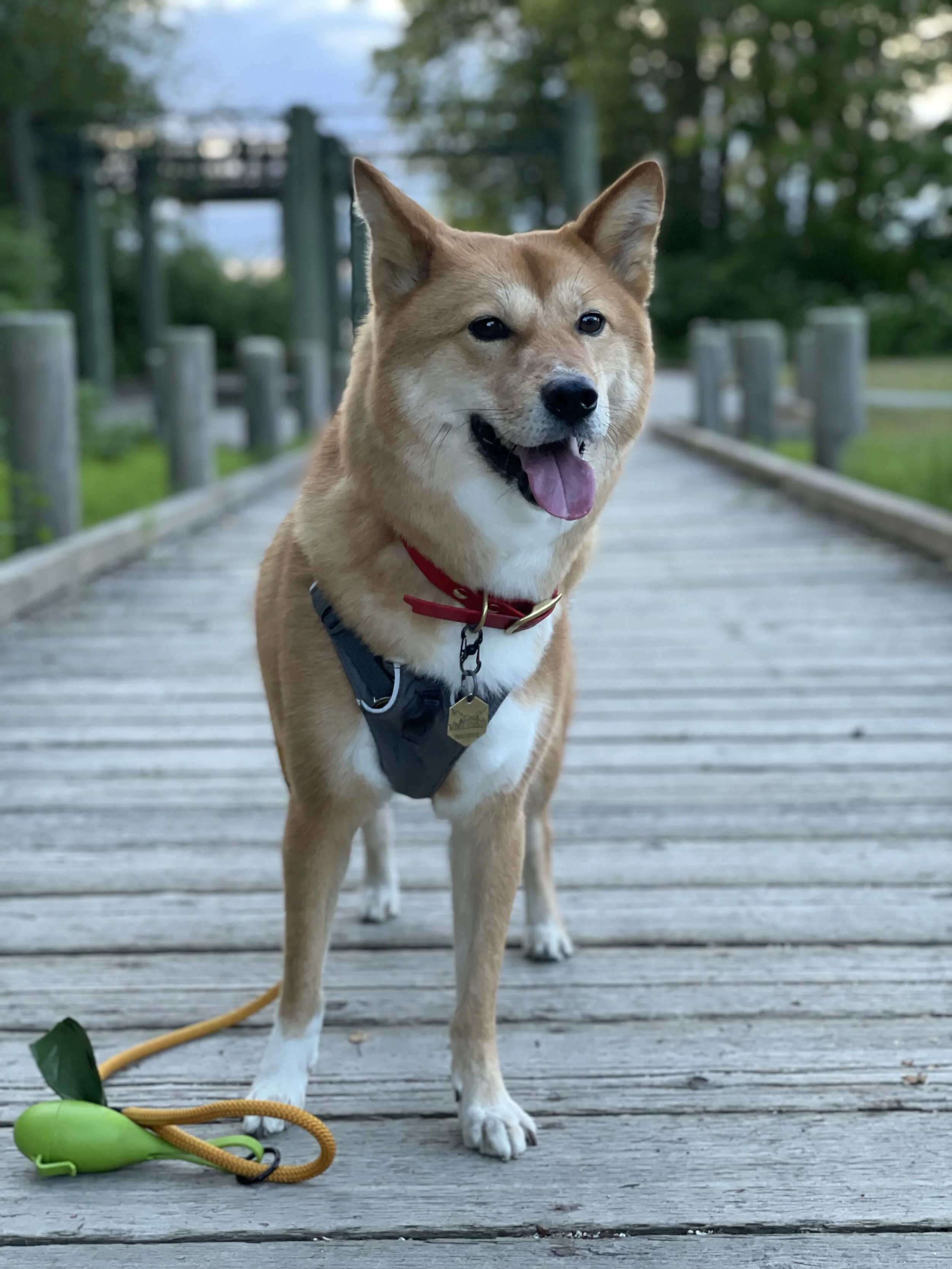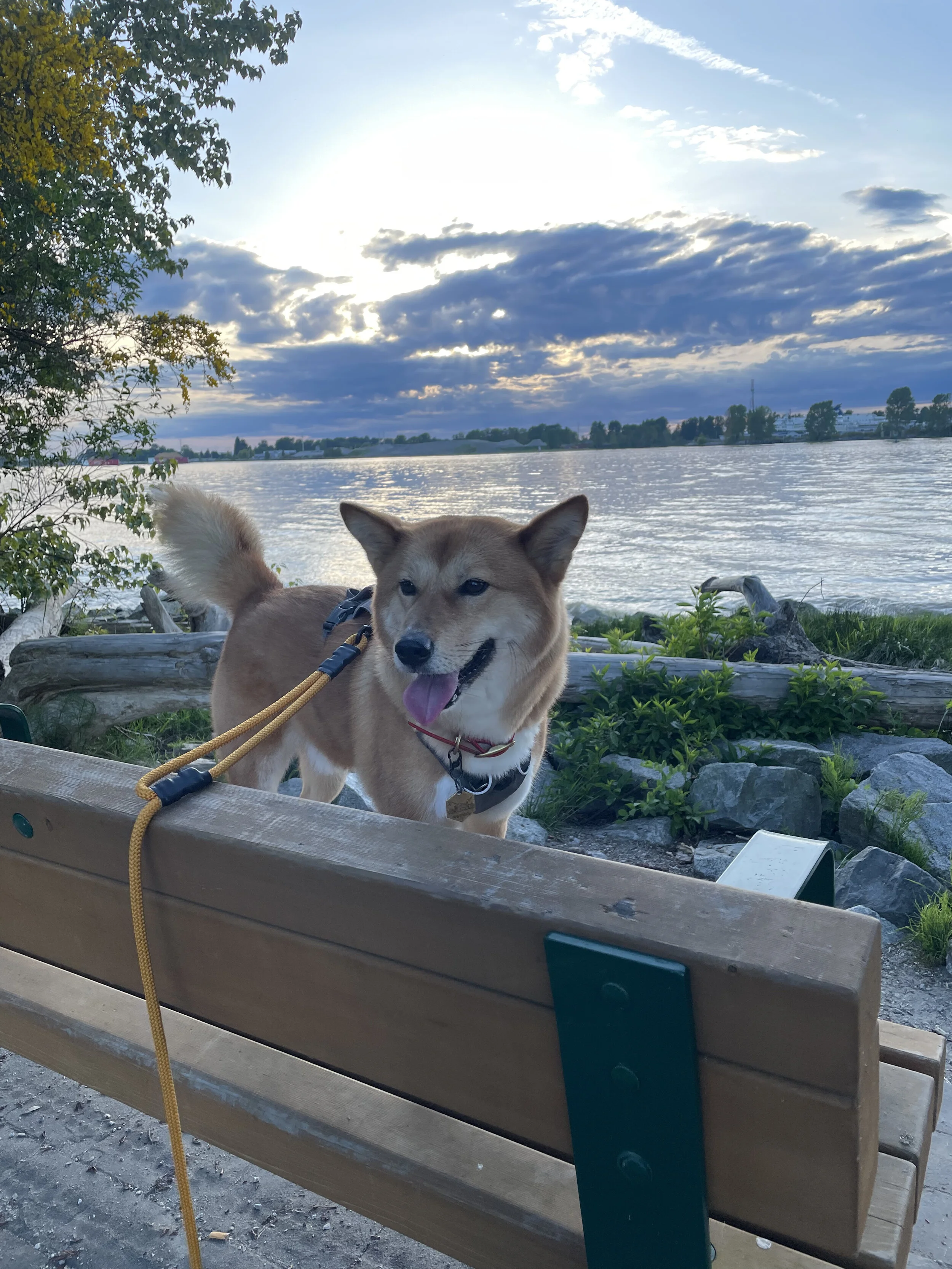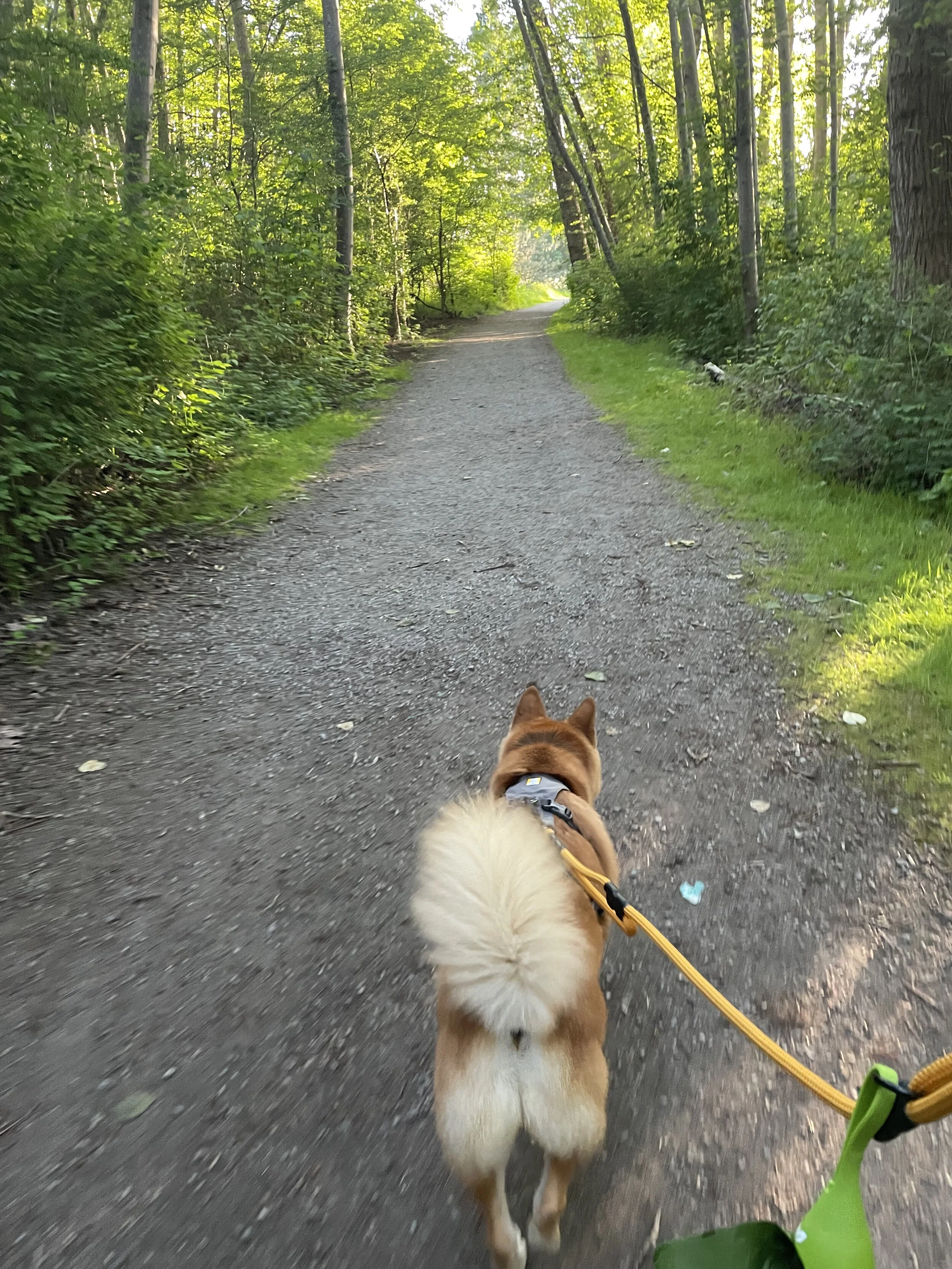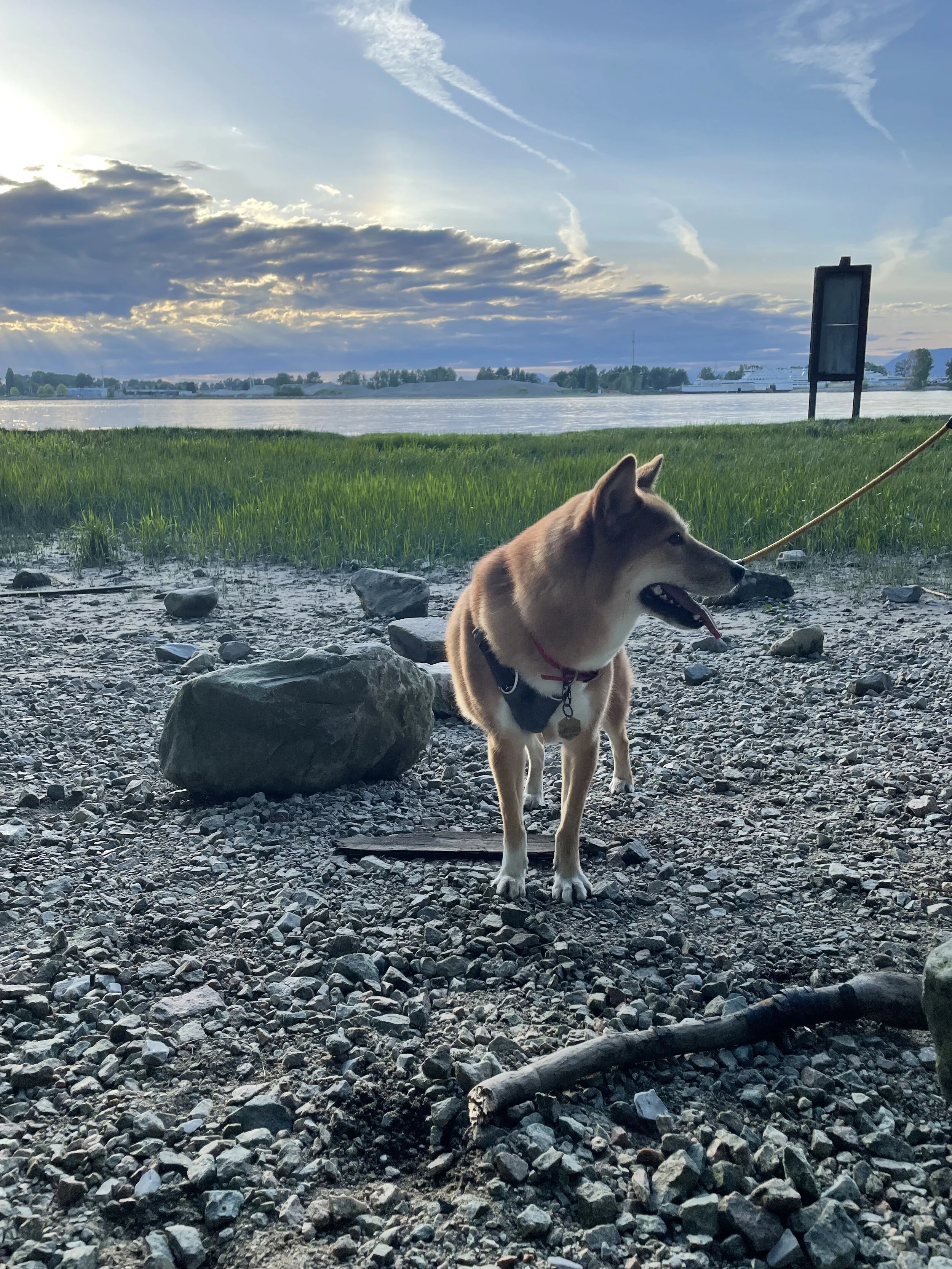Deas Island Regional Park
Markus posing by the lookout by Deas Island Regional Park
Have you ever wondered what's happening as you're driving through the George Massey Tunnel? Based on where it's located, we know that the tunnel goes under water, but we don't really see the water from either end of the tunnel and seeing it from a map doesn't do it justice. This week, we decided to check out Deas Island where there is a trail that'll allow you to see what's really happening.
Deas Island sits on the Fraser River between Richmond and Delta in British Columbia. Whenever you're driving through the George Massey Tunnel, you are driving under Deas Island and the body of water that it sits on top of. It's especially neat because you can't really grasp what's happening as you're driving through the tunnel, but there is an area on the island where you can see cars entering on one side and the water on the other side. This trail was a lot of fun and we're excited to be breaking it down with you today!
About Deas Island Regional Park
Markus stopping by the view along the Island Tip Trail
Named after an African-Canadian tinsmith who established a cannery on the island in 1873, Deas Island sits between Richmond and Delta. The George Massey Tunnel, which runs under the Fraser River on which the island sits, is a part of Hwy-99 and connects the two areas together. The regional park is home to three historical buildings, including the Burrvilla, a beautiful Victorian home which you can see on the way to the trail.
Especially during the pandemic where families are finding activities to do outdoors, there are plenty of picnic tables and a dock for water activities on the Deas Slough like kayaking or people fishing on it. It was nice to walk through the picnic area of the park seeing families enjoying the sunset while having dinner on a Sunday evening. Visitors can also opt to take the hour long trail to the tip of the island, which was the activity that we came here to do with our dog.
Island Tip Trail
Length: 4.3km
Traffic: Moderate
Route Type: Out & Back/Multiple Trails
As you enter Deas Island Regional Park, you will notice that the main public areas are right by the entrance, where most of the people will be. On both sides of the road you're driving in on, you'll find families either near the dock on one side or at the picnic tables having a meal on the other side. On the side with the tables, there is a path that'll lead you towards the trail. This trail leads you into the woods towards the tip of the island where there's a small beach at the end waiting for you.
The trail is fairly well-maintained and it was moderately busy. While the Island Tip Trail has a singular point at the end, there are multiple paths that you can take to get there. Most of the people who end up taking this route are probably headed towards the end of the island, which has a nice view, especially when the sun is setting.
Markus walking along the Island Tip Trail
For the most part, the trail is pretty well-marked, so look for the signs for the Island Tip Trail. Even if it wasn't, all the paths eventually merge back together to get to and from either side of the George Massey Tunnel. The experience of walking over the tunnel was fun for us because we've traveled through the tunnel so many times in our lives. Even though you know you're under water when you're going through the tunnel, you never really see the water so you don't think about it much. Just over halfway along the trail, you will end up at a point where you're standing at the top of the tunnel and you see cars entering the tunnel on one side and a massive body of water on the other side.
Towards the end of the trail, there are signs that suggest that the paths might be under water during high tide. While it doesn't seem like the water actually goes up that high, do consider that higher tides could limit certain areas of the trail and the beach at the end. The tide was low when we were there, so we cannot tell you exactly how high the water comes up, so it might be worth checking the tide chart before you head out. We were fortunate enough to have been there during sunset as well and the view to end the walk at the little beach makes it all worth it.
Markus taking a breather to enjoy the sunset by the beach at the end of the Island Tip Trail
Although there were a lot of cars at the parking lot, the trail didn't feel that busy. The trail was long enough that people were fairly spread out and it felt as though most of the "crowds" (pandemic-sized crowds, anyway) were closer to the beginning of the park. The Island Trip Trail was just over 4.3km and took us about an hour fifteen to an hour and a half to do. That said, if you're hoping for something shorter, you're in luck!
About halfway into our walk, we realized that there was another parking lot that would've cut our walk time by a little less than half. As we mentioned, a lot of the parking is right at the entrance of the park, but if you keep driving and past the beautiful Victorian Burrvilla (it's a big house), you'll find a secondary parking lot with more picnic tables in the area. This parking lot is about halfway into the island, which means that from this parking lot, there is an entrance to the trail and you're starting from roughly halfway on the trail.
What we liked
The trail was well-marked and maintained. It was a good trail through the woods with a nice view at the end.
There are multiple paths to the same place, which is nice to have with a reactive dog. We sometimes want to take the quieter route.
There were a lot of garbage cans along the way including at the very end by the small beach, which was unexpected and nice to have!
What we didn't like
Nothing
Our Recommendation for Reactive Dogs
This was a fun experience for us. Although the regional park itself was quite busy, the trail wasn't too bad. There weren't many dogs and all of them were leashed, so we didn't have issues with our dog, who is reactive. There were some small animals that he would pull towards and sounds from other ones that we didn't get to see (maybe toads?), but it was a fun to do. The view towards the end, especially with the setting sun, was an enjoyable way to end the walk.
Although the full length of the park was a good length for us, it was bordering on long. If you're hoping for something shorter, we would highly recommend starting at the secondary parking lot which could cut your walk time by almost half.
The path that we decided to take was more or less a straight shot to the other end of the island. There were some other loop trails that you can also take, ones that go along Deas Slough on the other side of the island rather than the Fraser River. We will likely visit Deas Island Regional Park sometime again in the future to check out those other trails and we'll be sure to post an update once we've had the chance to do those!
Disclaimer
Markus is a reactive, but not aggressive dog. His instinct is to avoid other dogs and he may growl, bark or lunge if provoked, but will not attack. We normally do not have issues with leashed dogs when both sides are controlled, but we will be on guard when an oncoming dog is not leashed. There are varying levels to a dog’s reactivity and only you can decide if this park, trail or hotel is appropriate for your dog. Our visits generally will not include off-leash areas; most experiences shared on The Markus Project are within leashed or undefined areas.
Please remember that our past experience visiting a park, trail or hotel may not be the same as your experience at the same park, trail or hotel. We have no control of who visits the park and whether they adhere to park rules - like leashing their dogs on leash-required paths - or not. Please use your discretion with the information provided and with your personal knowledge of your dog’s reactivity when visiting these parks, trails or hotels.





